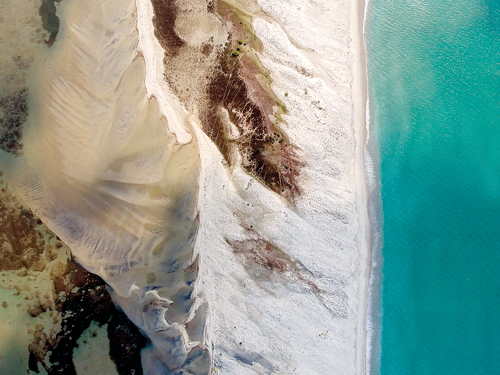The one that got away – Tashiya de Mel
Tashiya de Mel opened her Instagram account, ‘lostinCeylon’, in 2017, as a place where people could find inspiration, new places to see, and tips on what to do there. ‘At the start, I just wanted to photograph beautiful landscapes.’
But an intro course to documentary photography proved a turning point, and she decided she wanted to do more with her pictures. She moved away from ‘travel’ per se, and into ‘stuff that people don’t share when they travel, like pollution and our impacts on these diverse ecosystems and habitats’. Now, the angle is more routinely educational for her 6000 largely-Sri Lankan followers. ‘The most basic stuff: food wrappers, beer cans, shampoo packets. People just don’t get it.’
Hers is a sort of quiet anti-influencing: no monetising, no promotion, very few commissioned trips. She doesn’t always take pictures, and these days does not identify the remoter, unspoilt places. ‘I’ve seen what popularising destinations does.’
Occasionally, De Mel’s environmental interests coincide with her day job as a communications specialist. Her latest work, with the Parrotfish Collective, is part of the #ProtectVidattaltivu campaign, on the degazetting of mangrove forests in the Puttalam District for unsustainable ‘aquaculture’, or shrimp farming.
The one that got away
‘Two years ago, I was on the last day of a really intense hike in the Knuckles, when a friend got stung just above the eye by a wasp. We hired a van so we could take her to a hospital; but on the way, our guide said “There is something that you need to see.”
It was a ghost town. The main structures were there, but all the windows broken, the roofs taken off. As if it had been looted, almost. The name of the town was Pallegama, and it was about to be flooded by a new dam on the Kalu Ganga. The villagers had left – and this was obviously the last time we would be able to see it.
We walked around a bit, and it was very interesting: abandoned schools and houses and shops, and in the background all these mountains. But we needed to get our friend treated, so we thought “This is very cool and surreal,” and then we left. And I sort of forgot about it. It just wasn’t hugely significant to me at the time.
A few months later, I received a grant from the Goethe-Institut to follow my own photography project. I went back to the area, and it rekindled my interest in how this landscape was changing – the destruction, the relocations, the logging – and now my long-term documentary project is exploring the ecological and social consequences of hydropower expansion in Sri Lanka. While I was doing my research, I realised that Pallegama was the last town that existed before the inundation. Seeing that in real time is very rare, and it would have been gold if I had documented it. But at the time I had no idea that it would later fit into my photographic project! And now I’ll never have that chance again. It’s at the bottom of the reservoir.’
The shot that she got
‘Funnily, this one also nearly got away. I had just bought my drone, and flown it maybe twice, and I took it up to Talaimannar. We decided to do an early walk to Adam’s Bridge, to get that morning light.
People know that Mannar is pretty remote and it’s a different type of landscape, but you really don’t understand what it looks like till you see it from an aerial perspective. It’s incredible. So I flew the drone up to its max. height: certainly the highest I had ever flown it. The higher it went the more I was getting these crazy views… And then I lost transmission.
At this point I can’t see the drone, it’s so high up; and I’ve been walking while I’m flying it, so it’s probably not even close by; and the battery is dying. But at least I knew it wasn’t over water – so I thought “I’m just gonna bring it down, and hope.” I landed it; but now the drone is white, and the sand is basically white, and it’s tiny, and the beach is covered with plastic trash. I just have a close-up image of some sand, and I’m looking around thinking “How the hell am I gonna find this?!”
The feeling that I had lost it – and those photographs – was… I can’t explain. Traumatic. The battery was now down to about 2% or something, so I decided to just get it to take off once more, and hopefully I’d be able to see it – and wayyy in the distance I spotted it. I ran to it and literally held it to me. But then I went back and looked at the pictures, and they’re some of the best I’ve ever taken. They’re certainly my most-shared. But I’ve never gone that high again with my drone!’

‘The anxiety of anti-influence’. Pic by Tashiya de Mel


